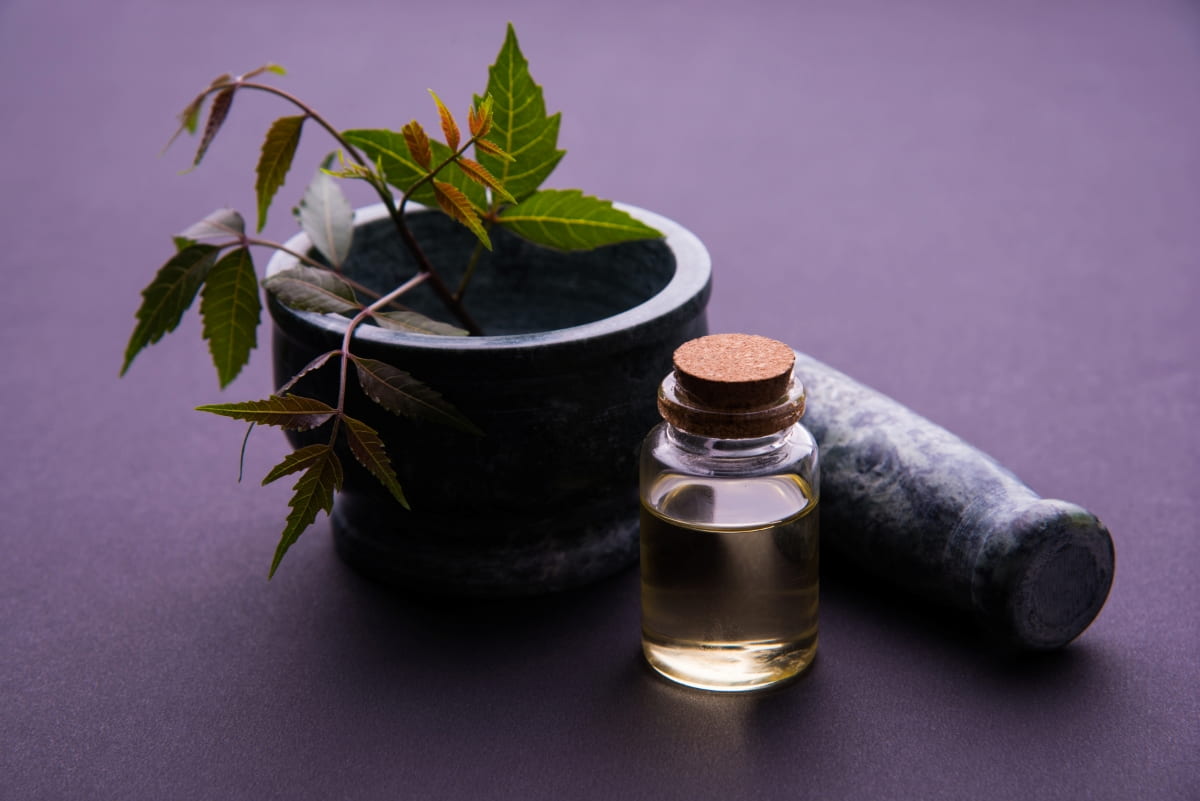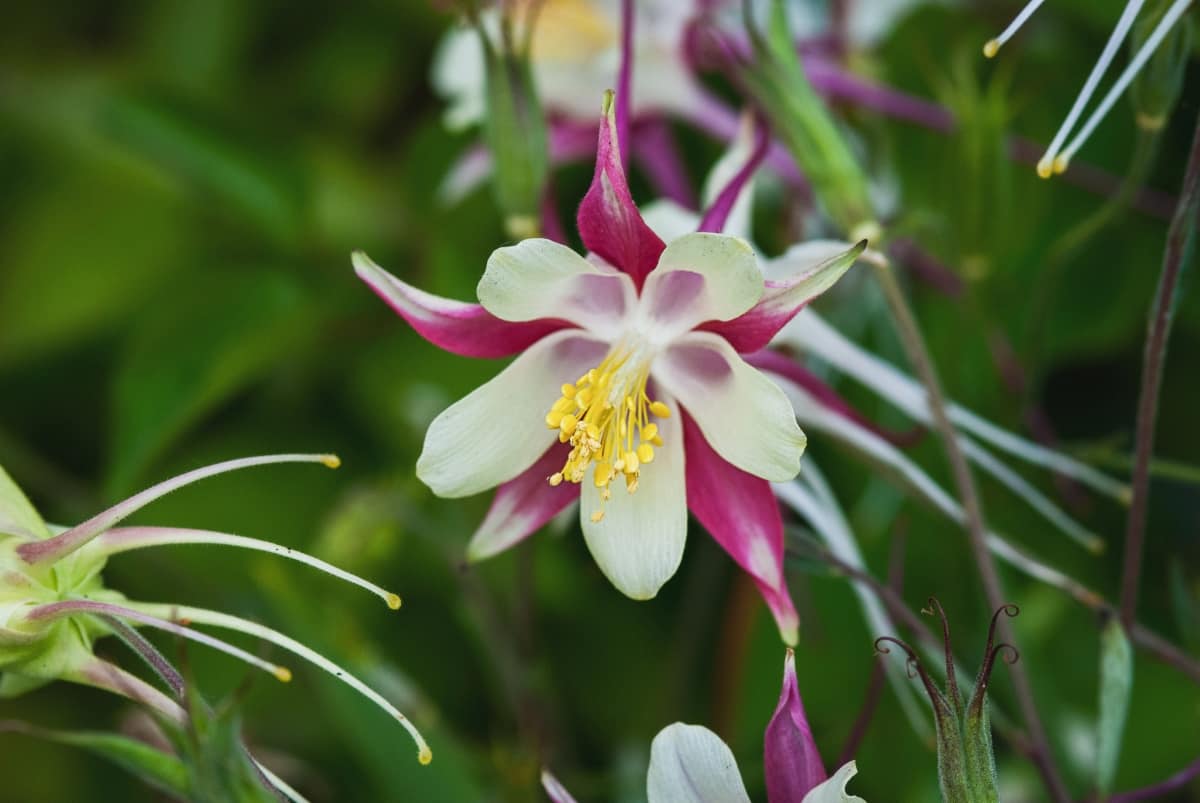Neem oil is a natural solution for gardeners looking to get rid of bugs in columbine plants. This versatile oil is used widely in gardening due to its effectiveness in pest control. It’s important to know how to give neem oil to plants, especially when dealing with flowering plants like columbine. Whether you’re looking to use neem oil on camellia, bean plants, or vegetable plants, the application process is crucial.

Questions like Can you spray neem oil on flowering plants or How to apply neem oil to vegetable plants are common among gardeners. It’s essential to understand the right way to protect with neem oil and what happens if you don’t dilute neem oil, as using too much neem oil on plants can be detrimental. This article guides you through the process, ensuring your columbine plants stay healthy and pest-free.
How to Use Neem Oil on Columbine Plants
Neem Oil and its Benefits for Columbine Plants
Neem oil is a natural pesticide that offers several benefits for columbine plants. It’s effective against a range of pests, including aphids, mites, and caterpillars, which are common on columbine. Neem oil operates by interrupting the pest’s life cycle, hindering their ability to feed, mature, and reproduce.
This makes it a great choice for long-term pest control. It’s also safe for beneficial insects, which helps maintain the ecological balance in your garden. The oil has fungicidal properties, too, protecting columbine plants from various fungal diseases. By using neem oil, gardeners can ensure their plants are protected in a way that’s safe for the environment.
How to Prepare Neem Oil to Use on Columbine Plants
Preparing neem oil for use on columbine plants involves creating a diluted solution. To start, you need to mix neem oil with a carrier, such as a mild soap or detergent, to help it blend well with water. The standard ratio involves approximately two teaspoons of neem oil and a few drops of soap for each gallon of water.
It’s important to shake or stir the mixture thoroughly to ensure the oil is well-emulsified. This step is crucial because neem oil is hydrophobic and won’t mix with water without a surfactant. Once prepared, the solution should be used immediately to prevent the oil from separating. Proper preparation ensures the neem oil is effective and safe for the plants.
How to Apply Neem Oil on Columbine Plants
Applying neem oil on columbine plants is a straightforward process but requires careful attention. Utilize a spray bottle or garden sprayer for uniform application on leaves, stems, and afflicted regions. Ensure comprehensive coverage, addressing both the upper and lower leaf surfaces, as pests commonly seek shelter underneath.
Optimal spraying times are early morning or late afternoon to prevent leaf scorching from direct sunlight exposure. Make sure the weather is calm, as wind can cause the spray to drift. Regular application, about once a week, is recommended for effective pest control. However, it’s crucial to observe the plants for any signs of stress or damage after application.
Mixing and Dilution for the Right Concentration of Neem Oil for Columbine Plants
Mixing and dilution are key to achieving the right concentration of neem oil for columbine plants. The standard dilution ratio is usually 2% neem oil, which translates to about two tablespoons of neem oil per gallon of water. However, it’s important to start with a lower concentration, especially if you are applying it to sensitive plants.
In case you missed it: How to Use Neem Oil on Gardenia Plants: A Natural Way to Get Rid of Bugs from Gardenia Plants

A test spray on a small area can help determine if the plants can tolerate the solution. If there’s no damage after 24-48 hours, you can proceed to spray the entire plant. Remember, too much neem oil on plants can cause harm, so it’s better to err on the side of caution.
Can Neem Oil Be Used on All Columbine Plant Varieties?
Neem oil is generally safe for all varieties of columbine plants. However, each variety may react differently to neem oil treatments. It’s always a good idea to do a patch test on a small section of the plant before applying it extensively. This test helps in identifying any adverse reactions the plant may have to neem oil. While neem oil is a natural product, it’s always best to use it judiciously and observe how your specific columbine variety responds to it.
How Long Does Neem Oil Stay Effective on Columbine Plants?
Neem oil remains effective on columbine plants for about a week to ten days. Various factors like rainfall, watering, and temperature can influence its effectiveness. After application, neem oil forms a protective barrier on the plant’s surface, but this barrier can be washed away by heavy rain or watering. Therefore, it’s recommended to reapply neem oil after significant rainfall or watering. Regular application ensures continuous protection against pests and diseases.
Using Neem Oil in Combination with Other Pest Control Methods
While neem oil is effective on its own, integrating it with other natural pest control methods like companion planting, beneficial insects, and manual pest removal can yield better results. This integrated approach helps manage a broader range of pests and reduces reliance on a single method, making your pest control strategy more effective and sustainable. However, it’s important to ensure that the other methods used are compatible with neem oil and do not diminish its effectiveness.
In case you missed it: How to Use Neem Oil on Coneflower Plants: A Natural Way to Get Rid of Bugs from Coneflowers

Some Common Pests and Diseases that Neem Oil Can Control on Columbine Plants
Neem oil exhibits strong efficacy in combating a range of pests and diseases commonly found in columbine plants, including aphids, spider mites, and whiteflies. These pests are known for damaging the foliage and compromising the plant’s health. Additionally, neem oil combats fungal diseases like powdery mildew and rust, which are prevalent in humid conditions. The oil’s natural components disrupt the life cycle of these pests and inhibit the growth of fungi, providing a comprehensive protective shield for columbine plants.
How to Monitor the Effectiveness of Neem Oil on Columbine Plants
To monitor the effectiveness of neem oil on columbine plants, regularly check the plants for signs of pests and disease. Look closely at the leaves, especially the undersides, for any lingering pests or new infestations. Observing changes in the plant’s health, such as improved foliage and reduced signs of damage, can also indicate the effectiveness of neem oil. Keeping a record of treatments and their outcomes helps in adjusting application methods and frequencies for optimal results.
Safety Precautions to Take when Using Neem Oil on Columbine Plants
When using neem oil on columbine plants, it’s important to take certain safety precautions to protect both the plants and yourself. To prevent skin irritation, it is advisable to consistently use gloves and protective attire. Ensure that the area is well-ventilated when spraying, and avoid inhaling the spray mist. Be cautious not to overapply neem oil, as too much can harm the plants. Keep pets and children away during application, and store neem oil out of their reach. Adhering to these guidelines will guarantee the safe and efficient utilization of neem oil in your garden.
In case you missed it: How to Use Neem Oil on Salvia: A Natural Way to Get Rid of Bugs from Salvia Plants

Conclusion
Using neem oil on columbine plants offers a natural and effective way to combat pests and diseases, ensuring the health and beauty of your garden. By understanding how to prepare, apply, and monitor neem oil treatments, along with taking necessary safety precautions, gardeners can protect their columbine plants effectively. Embracing this eco-friendly approach contributes to a healthier garden ecosystem and the well-being of the environment.
- Feed Your Flock for Less: Top 10 Tips to Save on Chicken Feed
- Ultimate Guide to Ossabaw Island Hog: Breeding, Raising, Diet, and Care
- Hatching Answers: The Top 10 Reasons Your Chickens Aren’t Laying Eggs
- Eggs and Economics: Breaking Down the Cost of Raising Backyard Chickens
- Defend Your Greens: Proven Methods to Keep Iguanas Out of Your Garden
- Ultimate Guide to Cinnamon Queen Chicken: A Comprehensive Guide for Beginners
- Ultimate Guide to California Tan Chicken: Breeding, Raising, Diet, Egg-Production and Care
- Ultimate Guide to Marsh Daisy Chicken: Breeding, Raising, Diet, and Care
- 10 Types of Chicken Farming Businesses You Can Start for Profits